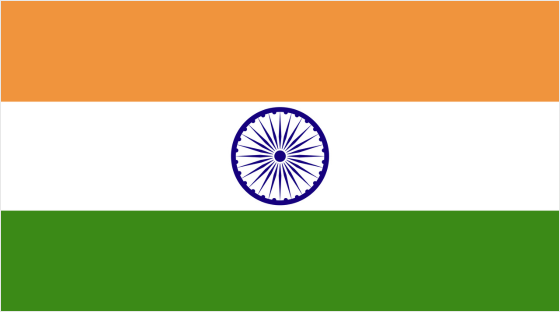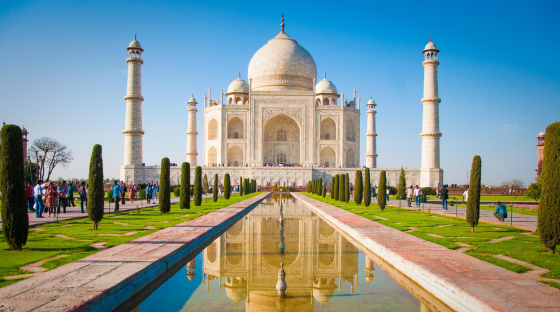-
Services
-
Software Project Delivery
-
Services
-
Solutions
-
Technologies
-
-
Network
-
Discover
-
Regions
-
Industries
-
Must-Read Guide
-
2026 Global Software Outsourcing Rates and Trends GuideDiscover why rates are just one aspect of the Accelerance Global Software Outsourcing Rates & Trends Guide, which offers valuable insights into the software development landscape.
-
-
-
Resources
-
Our Resources
-
Newest White paper
-
Aviation Ecosystem Modernization: A Holistic Approach for Meaningful TransformationModernize aviation by integrating people, processes, technology, and data
-
-
New eBook
-
 The True Cost of Software DevelopmentHidden costs can wreck your budget. Our new eBook breaks down the true cost of outsourcing—get your copy to stay ahead.
The True Cost of Software DevelopmentHidden costs can wreck your budget. Our new eBook breaks down the true cost of outsourcing—get your copy to stay ahead.
-
-
Featured White paper
-
Flow & Process OptimizationIn this white paper, you'll learn to streamline workflows, improve change management, and accelerate results.
-
-
-
About
-
About Accelerance
-
Our History
-
Accelerance: Our HistoryThere's great talent everywhere and great teams everywhere, which is the basis of the Accelerance model.
-
-
Software Without Borders
-
New Episode Every Week!Tune into our podcast Software Without Borders, the essential listen for technology leaders and business owners in the software sector who crave insights from the industry’s top minds.
-
-
Andy's Book
-
Synergea: A Blueprint for Building Effective, Globally Distributed Teams in the New Era of Software DevelopmentPeople are first and locations are secondary when it comes to software development success.
-
-
- Client Reviews
India

Overview
A global leader in IT outsourcing, India is diversifying from its traditional base in customer call centers, internal help desk support, and business process outsourcing to take on innovative technology such as blockchain and artificial intelligence. The country’s tech industry employs more than five million people and a stable government has a strategic focus on skills development and innovation.
The world’s largest democracy, India is home to 1.4 billion people and the depth of its talent pool is unrivaled. Whether partnering with a small startup or a Fortune 500 company, India’s software development companies have built a strong reputation for intellectual property protection and data security. In the most recent Global Cybersecurity Index, India moved up 37 places to an overall rank of 10th in the world.
Government incentives and tax benefits to support the IT and software industry, coupled with India’s historic ties to the West and compatible business structure, continue to cement its position as the gold standard in South Asia.
The Accelerance Global Network is the most curated list of high-quality global teams ever assembled.
3850
Developers
Total number of developers in our certified partner network by country
5
Certified Partners
Total number of certified partners in our global network by country.
14hrs
Time Travel (From NY)
Average flight time from NY to the major cities in the country.
31
Partner Innovation capability
The score reflects investment in STEM progrms and IT funding by country.
85
Partner Skill Level
Level of workforce skills and quality of education, including factors such as digital literacy, interpersonal skills, etc.
58
Partner Global Competitiveness
National productivity based on 12 core pillars, including government policy, infrastructure, economic stability, etc.
High
Software Outsourcing Readiness
Overall rating, based on the maturity of the tech sector, socio-political conditions, and on-the-ground research by Accelerance.

Talent Pool & Education
Some 2.5 million STEM graduates emerged onto the market in 2023 and almost half of them were women – a world-leading diversity ratio. India dominates the market for IT outsourcing, thanks to its large, well-educated, English-speaking population, and now boasts the distinction of being the third-largest startup ecosystem globally. The Startup India initiative has seen extraordinary growth, from 450 startups in 2016 to more than 100,000 in 2023.
Many US universities now accept Indian exchange students, whose understanding of Western culture and business practices ease many of the communication challenges initially experienced in the mid-1990s. The country’s technical education infrastructure includes 2500 engineering colleges, and a new National Education Policy has turned the spotlight on STEM-based learning and driving digital literacy. Widespread internet penetration and the advent of 5G have further accelerated the sector’s transformation.
In 2023, the World Bank approved a $255 million loan to help India improve the quality of its technical education and provide more career opportunities to students. Over the next five years, the project will support around 275 government-run technical institutions, benefitting more than 350,000 students each year.
Language
Hindi and English are India's official languages, the legacy of a century under British rule. Today, an estimated 30% of the population can speak English to some degree, although accents may present a challenge. Most software engineers are reasonably fluent and Bangalore, a popular tech hub, has the highest number of English speakers in the country.

Economic Outlook
India continues to show resilience against the backdrop of a challenging global environment, according to the World Bank's latest development update. A growth rate of 7.2% in 22/23 was the second highest among G20 countries and almost twice the average for emerging market economies, underpinned by robust domestic demand, strong public infrastructure investment, and a strengthening financial sector. Inflation is also expected to decline.
A recent report from the Deloitte Global Economics Research Center is bullish, citing India’s emphasis on using technology to accumulate and diffuse knowledge, building high-end manufacturing capacity, and improving competitiveness through exports. “We believe momentum will be strong as the world recovers later in 2024, and as that global recovery tide lifts all boats, India will see much broader economic growth.”
While GDP is expected to soften slightly and fall below 7% in the year ahead, India remains the fastest-growing major economy. Drought conditions that impacted the agricultural industry in 2023 are expected to ease, with rainfall forecast to be normal or above for the country as a whole.
In another boost to the economy, the World Bank has approved $1.5 billion in financing to accelerate India’s development of low-carbon energy by scaling up renewables, developing green hydrogen, and stimulating climate finance for investing in low-carbon energy initiatives.
Political Conditions
Narendra Modi was sworn in as India’s prime minister for a third term in June 2024 after a surprise election result that saw his Hindu-nationalist Bharatiya Janata Party lose its outright majority. The ceremony at the Rashtrapati Bhavan, the president’s palace in New Delhi, was attended by thousands of dignitaries, including the leaders of seven neighboring countries, Bollywood stars and industrialists.
The BJP-led National Democratic Alliance has presented a united front but is expected to face challenges balancing diverse political agendas. Despite India’s impressive fiscal growth, the coalition government will be under pressure to ensure the country’s economic disparity does not widen, with a lack of jobs, high prices, low incomes and religious fault lines contributing to Modi’s fall-off in support.
Popular with the country’s large Hindu majority, Modi is credited with elevating India’s reputation as a global power, highlighted by a successful moon landing in 2023. However, critics accuse him of overseeing an unprecedented consolidation of power, eroding the independence of the judiciary, and using government agencies to pursue and jail political opponents.
The Economist Intelligence Unit predicts India will aim to influence international policy by positioning itself as a leader of emerging economies, using its strong bilateral relations and growing market size. In a delicate juggling act, strategic ties will be maintained with Russia while gradually fostering closer cooperation with fellow members of the Quad, an informal diplomatic grouping that includes the US, Japan, and Australia. Tensions with China will remain elevated, but a large-scale military conflict is considered unlikely.
Learn more about our customer stories.
Looking for a customer story in a specific technology or industry? Discover compelling customer narratives within a specific technology or industry that resonate with your unique software development needs.
